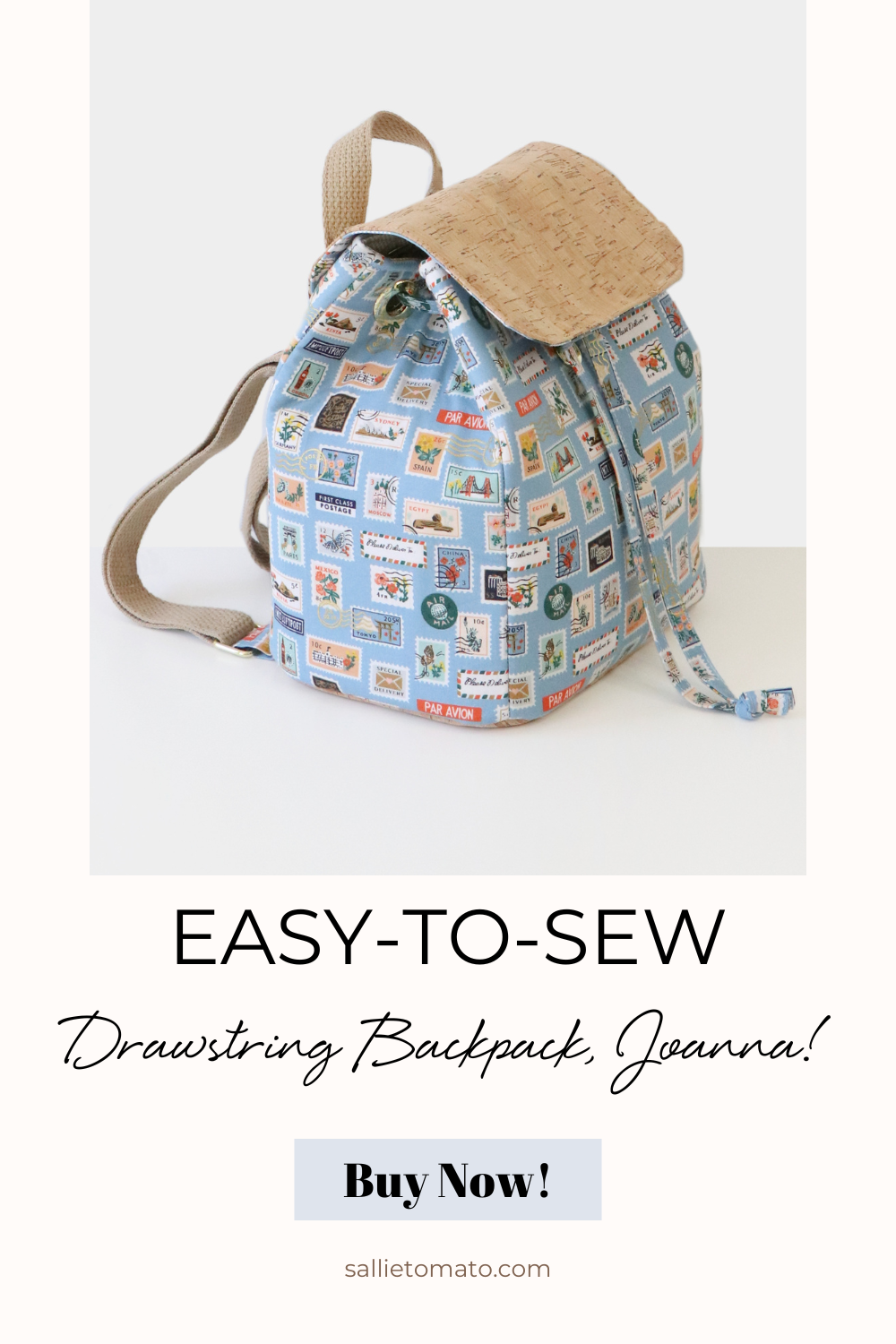Backpack patterns are essential for crafting unique and functional bags. They offer a guide to creating backpacks tailored to your style.
Finding the right backpack pattern can be a fun adventure. Whether you are a seasoned crafter or a beginner, a good pattern simplifies the process. It ensures your backpack is both stylish and practical. From choosing the fabric to stitching the pieces together, a clear pattern is your best friend.
Imagine having a backpack that reflects your personality and meets your needs. With countless patterns available, you can find one that suits your taste and skill level. Dive into the world of backpack patterns and discover how easy and rewarding it can be to make your own.
Contents
Choosing Materials
Choosing the right materials is crucial for creating a durable and stylish backpack. The correct combination of fabric and hardware can make or break your project. Let’s dive into the details to help you make the best choices.
Fabric Selection
Start with sturdy fabrics. Canvas and denim are popular choices. They are durable and easy to work with. Nylon and polyester are also good options. They are lightweight and water-resistant. Consider the backpack’s purpose. For hiking, choose a waterproof fabric. For school, a simple cotton blend may suffice.
Don’t forget the lining. It adds strength and a polished look. Cotton or polyester linings are common. They are easy to clean and maintain. Pick a color that complements the outer fabric. This will enhance the overall appearance.
Hardware Essentials
Quality hardware is just as important as the fabric. Look for strong zippers. Metal zippers are durable. Plastic zippers are lightweight but can break easily. Choose according to your needs.
Strap adjusters are another key component. Metal adjusters are sturdy. Plastic ones are lighter and cheaper. Think about the weight and frequency of use. Also, consider the buckles. They should be easy to fasten and unfasten. Again, metal offers durability, while plastic offers a lightweight option.
Don’t overlook grommets and rivets. They reinforce stress points and add a professional touch. Opt for rust-resistant materials. This ensures longevity, especially for outdoor use.

Credit: sallietomato.com
Tools And Equipment
Creating a backpack requires the right tools and equipment. These tools ensure your project goes smoothly. They help you achieve professional results. Below are essential tools and equipment for making a backpack pattern.
Sewing Machine Basics
A good sewing machine is crucial. It helps you sew strong and neat stitches. Choose a machine with various stitch options. This allows you to sew different fabrics. Make sure your machine can handle heavy fabrics. Test it on canvas or denim before starting. Keep it well-oiled and clean. This ensures smooth operation.
Cutting Tools
Sharp cutting tools are a must. They help you cut fabric accurately. Use fabric scissors for clean cuts. Avoid using them on paper. This keeps them sharp. A rotary cutter is another great tool. It is perfect for cutting straight lines. Use a cutting mat to protect your table. Always keep spare blades handy.
Designing The Pattern
Designing a backpack pattern is an exciting part of the creation process. This stage involves turning your imagination into a physical design. Let’s explore the steps of sketching ideas and creating templates.
Sketching Ideas
Start with a blank canvas. Let your creativity flow. Use a pencil and paper or a digital drawing tool. Focus on the backpack’s shape, size, and features. Think about pockets, zippers, and straps.
To make it easier, consider these points:
- What will the backpack carry?
- How many compartments are needed?
- Should there be special features like a laptop sleeve or water bottle holder?
Keep your sketches simple. Refine them as you go. Remember, your initial sketches are just a guide.
Creating Templates
Once you have a clear sketch, it’s time to create templates. Templates are patterns you will use to cut fabric. They ensure each piece fits perfectly. Here’s how to start:
- Transfer your sketch to a sturdy paper or cardboard.
- Measure and mark each section of the backpack.
- Cut out the shapes carefully.
Use a ruler and a measuring tape for accuracy. Label each piece to avoid confusion. For example, mark the front panel, side panels, and straps.
Creating templates is a crucial step. It helps you visualize the final product. It also saves time and reduces errors during assembly.
Using these steps, you can move from an idea to a tangible pattern. The right design can make all the difference in your backpack project.
Cutting The Pieces
Cutting the pieces for your backpack pattern is a crucial step. Precision is key to ensure everything fits together perfectly. Follow these steps to achieve accurate results.
Measuring Twice
Before you start cutting, ensure your measurements are spot-on. Use a ruler or measuring tape for accuracy. Double-check each measurement to avoid mistakes.
Here’s a simple checklist to help you measure correctly:
- Measure the fabric on a flat surface.
- Ensure the fabric is wrinkle-free.
- Mark measurements with a fabric chalk or pencil.
Remember, measure twice and cut once. This saves fabric and time.
Cutting Techniques
Different cutting techniques can affect the final look of your backpack. Here are some common methods:
| Technique | Description |
|---|---|
| Scissors | Ideal for small and detailed cuts. Use sharp scissors for clean edges. |
| Rotary Cutter | Perfect for straight lines. Requires a cutting mat to protect surfaces. |
| Utility Knife | Great for thick fabrics. Ensure the blade is sharp for smooth cuts. |
Pro Tip: Use pattern weights to hold your fabric in place. This prevents shifting while cutting.
For curved lines, use scissors. For long straight lines, a rotary cutter works best.
Lastly, always cut along the outer edge of your marked lines. This ensures accuracy and proper seam allowances.
Sewing The Backpack
Creating your own backpack can be a fun and rewarding project. With the right pattern, you can have a stylish and functional bag. This guide will help you through the sewing process. We’ll cover stitching the panels and attaching the straps. Let’s get started!
Stitching Panels
Start by cutting out your fabric pieces according to the pattern. Lay your fabric pieces on a flat surface. Make sure they are aligned properly. Pin the panels together along the edges. This will keep them in place as you sew.
Set up your sewing machine with a matching thread color. Begin stitching along the pinned edges. Use a straight stitch for a clean finish. Sew slowly to keep your lines straight. Backstitch at the beginning and end to secure the seams.
Once all panels are stitched, trim any excess fabric. Press the seams open with an iron. This will help the backpack take shape. Your panels are now ready to be assembled.
Attaching Straps
Cut the straps according to the pattern instructions. Fold the straps in half lengthwise. Press with an iron to create a crease. Sew along the open edge to close the straps.
Attach the straps to the top of the backpack. Pin them in place securely. Make sure they are even on both sides. Sew the straps onto the backpack using a reinforced stitch. This will make sure they can carry weight.
Next, attach the bottom of the straps to the lower part of the backpack. Check the length to ensure comfort. Pin and sew in place securely. Reinforce the stitching at stress points for extra durability.
Now your backpack is almost complete! The straps are attached, and the panels are stitched. All that’s left are the finishing touches. Enjoy your new handmade backpack!
Adding Pockets
Adding pockets to a backpack is a great way to increase its functionality. Pockets provide organization and easy access to essentials. Whether internal or external, pockets make a backpack more versatile and user-friendly.
Internal Compartments
Internal compartments help keep your items organized. They prevent clutter and make finding things easier. Here are some common types of internal compartments:
- Document Sleeve: Perfect for keeping important papers straight and unwrinkled.
- Mesh Pockets: Ideal for small items you want to see at a glance.
- Elastic Pockets: Great for securing items like water bottles or snacks.
- Pen Holders: Keep pens and pencils in place and easy to reach.
External Pouches
External pouches provide quick access to frequently used items. They save time and effort. Here are some popular types of external pouches:
- Side Pockets: Often used for water bottles or umbrellas. Easily accessible without removing the backpack.
- Front Pockets: Ideal for small items like keys, phones, or wallets. Convenient for quick access.
- Top Pockets: Great for items like sunglasses or snacks. Easy to reach on the go.
Adding these pockets enhances the backpack’s functionality. It makes daily use more efficient and enjoyable.
Finishing Touches
The final steps in making your backpack are crucial. These finishing touches add both style and function. Let’s explore how to make your backpack look polished and professional.
Topstitching
Topstitching gives your backpack a neat and clean look. Use a strong thread for durability. Stitch close to the edge of the fabric. This adds strength to the seams. It also prevents fabric from shifting.
Topstitching is not just decorative. It also adds structure to your backpack. It helps the bag keep its shape. Practice on scrap fabric first. This ensures even stitching. Your backpack will look store-bought with good topstitching.
Adding Zippers
Adding zippers can be tricky. But it makes your backpack more functional. Choose a zipper that matches your fabric. Measure the opening carefully. Cut a straight line where the zipper will go.
Use zipper tape to hold the zipper in place. Sew slowly and carefully. This ensures the zipper is straight. A well-placed zipper adds convenience. It also makes your backpack look professional.
Credit: ithinksew.com
Testing And Adjusting
Testing and adjusting your backpack pattern is crucial. This process ensures your backpack fits well and lasts longer. Let’s dive into two important aspects of this stage: fit check and reinforcement.
Fit Check
Start by checking the fit of your backpack. Place some items inside it. Then, wear it as you would normally. Adjust the straps and see how it feels. Does it sit comfortably on your back? Is the weight distributed evenly? If not, take note of the areas that need adjustment. You may need to lengthen or shorten the straps. Sometimes, moving the straps’ attachment points helps. Small changes can make a big difference in comfort.
Reinforcement
Once the fit is satisfactory, focus on reinforcement. Check the seams and stress points. Areas where straps attach need extra strength. Use a stronger stitch or add extra fabric. Reinforce the bottom of the backpack too. This area carries the most weight. Adding a durable fabric layer is a good idea. Reinforcement extends the life of your backpack. It keeps your belongings safe and secure.
Frequently Asked Questions
What Is A Backpack Pattern?
A backpack pattern is a design used for creating stylish and functional backpacks.
Why Is The Backpack Pattern Important?
The backpack pattern ensures the backpack is both comfortable and practical for daily use.
How Do I Choose A Backpack Pattern?
Choose a backpack pattern based on your needs, style, and comfort preferences.
Conclusion
Choosing the right backpack pattern adds style to your adventures. Patterns reflect your personality and make your backpack unique. Remember to pick a design that suits your needs and preferences. A good pattern can uplift your mood and enhance your travels.
Explore different options and find the perfect fit for you. Happy backpacking!

